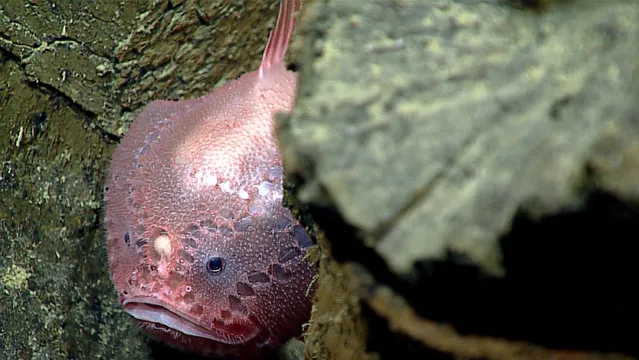
This April 30, 2016 image made available by NOAA shows a deep sea anglerfish living between pillow basalt rock formations, during a deepwater exploration of the Marianas Trench Marine National Monument area in the Pacific Ocean near Guam and Saipan. The ambush predator waits for prey to be attracted by its lure, located between its eyes, and gulps it with its large mouth. (Photo by NOAA Office of Ocean Exploration and Research via AP Photo)
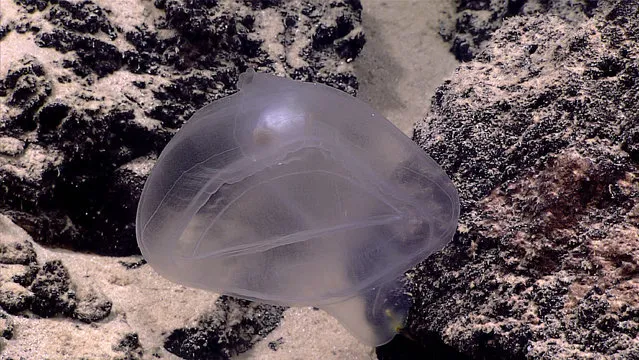
This April 26, 2016 image made available by NOAA shows a predatory tunicate, an invertebrate animal, during a deepwater exploration of the Marianas Trench Marine National Monument area in the Pacific Ocean near Guam and Saipan. Dives in the expedition ranged from 250 to 6,000 meters (820 feet to 3.7 miles) deep. (Photo by NOAA Office of Ocean Exploration and Research via AP Photo)
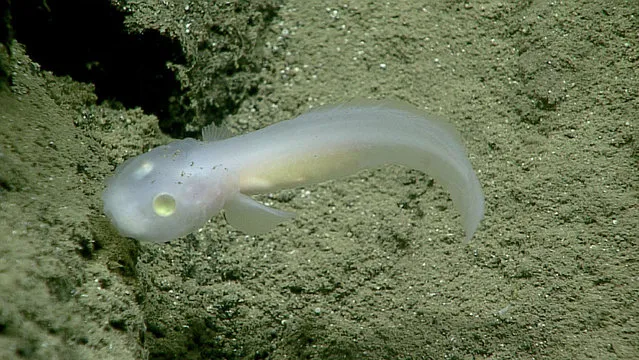
This June 30, 2016 image made available by NOAA shows a fish, of the family Aphyonidae, which had never before been seen alive, during a deepwater exploration of the Marianas Trench Marine National Monument area in the Pacific Ocean near Guam and Saipan. (Photo by NOAA Office of Ocean Exploration and Research via AP Photo)

This May 4, 2016 image made available by NOAA shows a parapagurid hermit crab hosting an anemone which secretes a “shell” for the crab, during a deepwater exploration of the Marianas Trench Marine National Monument area in the Pacific Ocean near Guam and Saipan. Hermit crabs usually use a snail or other shell as protection. (Photo by NOAA Office of Ocean Exploration and Research via AP Photo)
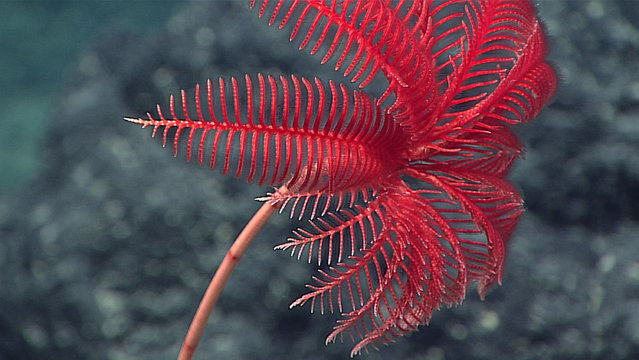
This April 29, 2016 image made available by NOAA shows the feeding arms of a stalked crinoid animal during a deepwater exploration of the Marianas Trench Marine National Monument area in the Pacific Ocean near Guam and Saipan. (Photo by NOAA Office of Ocean Exploration and Research via AP Photo)
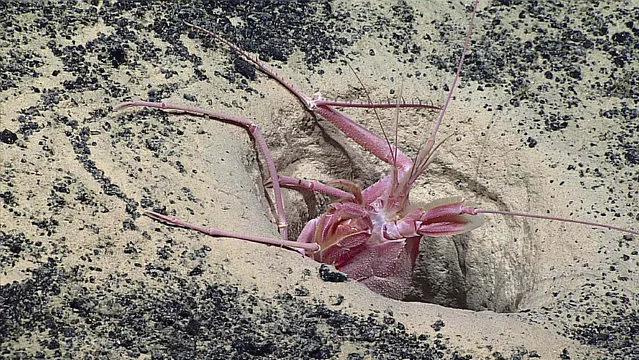
This April 30, 2016 image made available by NOAA shows a large blind lobster popping its head out of a hole during a deepwater exploration of the Marianas Trench Marine National Monument area in the Pacific Ocean near Guam and Saipan. (Photo by NOAA Office of Ocean Exploration and Research via AP Photo)
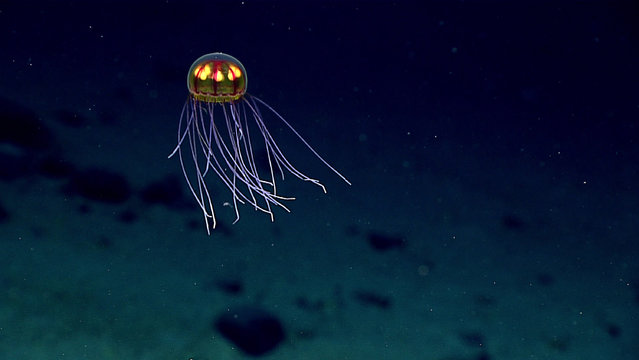
This April 24, 2016 image made available by NOAA shows a bioluminescent jellyfish during a deepwater exploration of the Marianas Trench Marine National Monument area in the Pacific Ocean near Guam and Saipan. (Photo by NOAA Office of Ocean Exploration and Research via AP Photo)
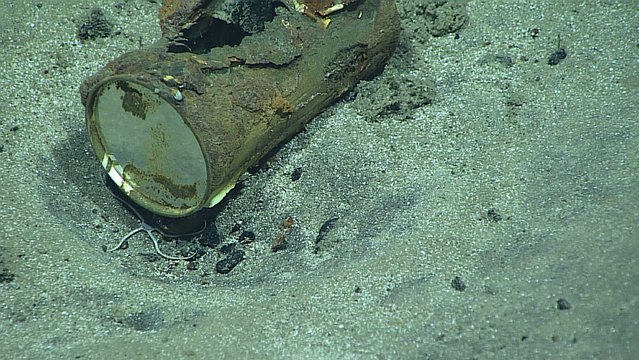
This June 29, 2016 image made available by NOAA shows a can on an unnamed seamount at a depth of 3,306 meters (2 miles), during a deepwater exploration of the Marianas Trench Marine National Monument area in the Pacific Ocean near Guam and Saipan. (Photo by NOAA Office of Ocean Exploration and Research via AP Photo)
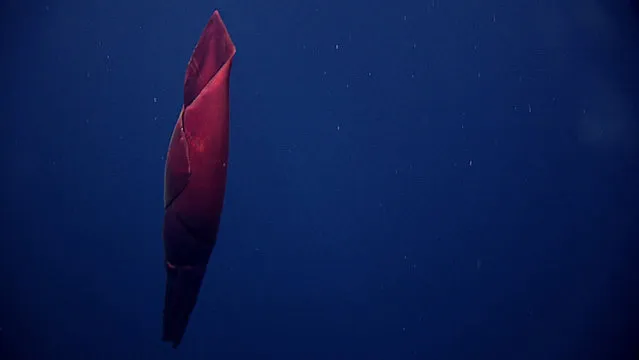
This June 30, 2016 image made available by NOAA shows a squid as the remote operated vehicle Deep Discoverer descends to the seafloor of the Marianas Trench Marine National Monument area in the Pacific Ocean near Guam and Saipan. (Photo by NOAA Office of Ocean Exploration and Research via AP Photo)
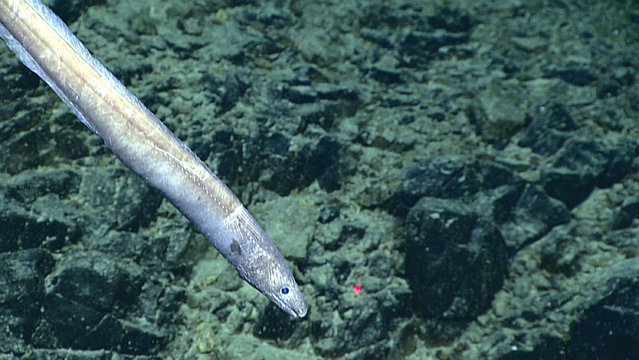
This June 27, 2016 image made available by NOAA shows a cutthroat eel at 3,145 meters (1.9 miles) deep on Stegasaurus Ridge, during a deepwater exploration of the Marianas Trench Marine National Monument area in the Pacific Ocean near Guam and Saipan. The eels are abundant in the deep ocean and active day and night. (Photo by NOAA Office of Ocean Exploration and Research via AP Photo)
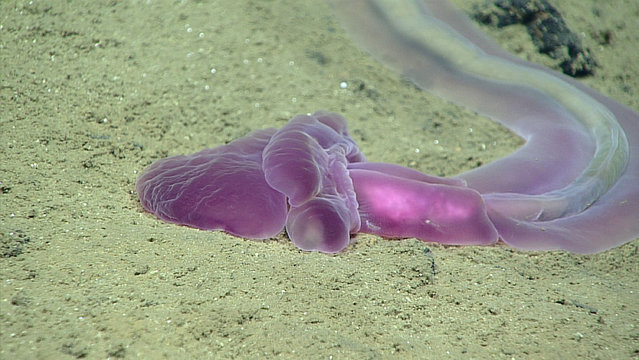
This June 30, 2016 image made available by NOAA shows an acorn worm on the “Twin Peaks” underwater formation during an exploration of the Marianas Trench Marine National Monument area in the Pacific Ocean near Guam and Saipan. (Photo by NOAA Office of Ocean Exploration and Research via AP Photo)
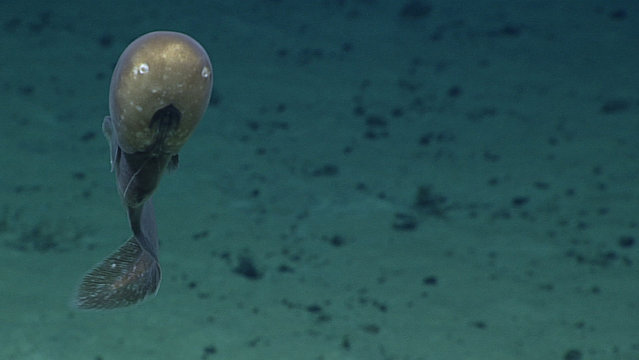
This June 29, 2016 image made available by NOAA shows a cusk eel with an unusual bulbous head shape with small eyes, large nostrils, and a mouth placed low on the head, during a deepwater exploration of the Marianas Trench Marine National Monument area in the Pacific Ocean near Guam and Saipan. Researchers believe this could be a new species. (Photo by NOAA Office of Ocean Exploration and Research via AP Photo)
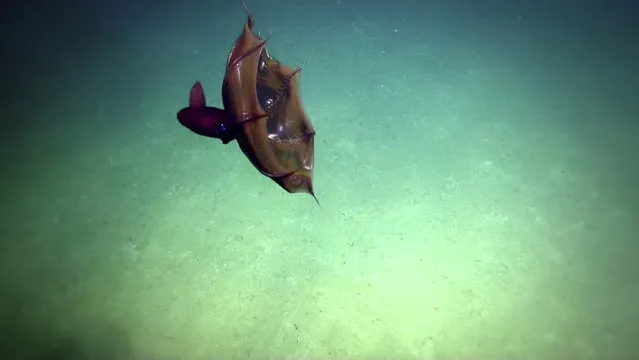
This June 27, 2014 photo made available by the Ocean Exploration Trust shows a vampire squid (Vampyroteuthis infernalis), a deep-sea cephalopod, during an overnight dive in the Gulf of Mexico. Its name comes from its deep color and red eyes, not because it feeds on blood. (Photo by ECOGIG/Nautilus Live/Ocean Exploration Trust via AP Photo)
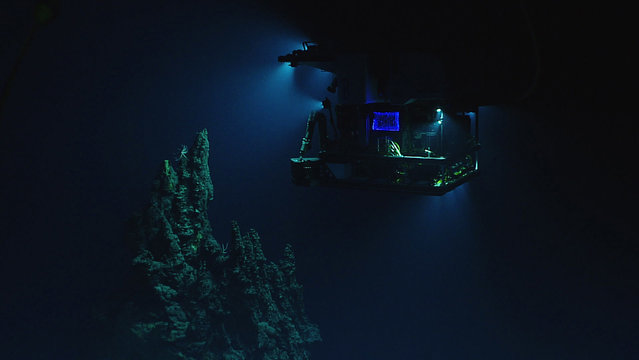
This April 28, 2016 image made available by NOAA shows the remotely operated vehicle Deep Discoverer surveying a 14-meter (46-foot) hydrothermal chimney during a deepwater exploration of the Marianas Trench Marine National Monument area in the Pacific Ocean near Guam and Saipan. Dives in the expedition ranged from 250 to 6,000 meters (820 feet to 3.7 miles) deep. (Photo by NOAA Office of Ocean Exploration and Research via AP Photo)
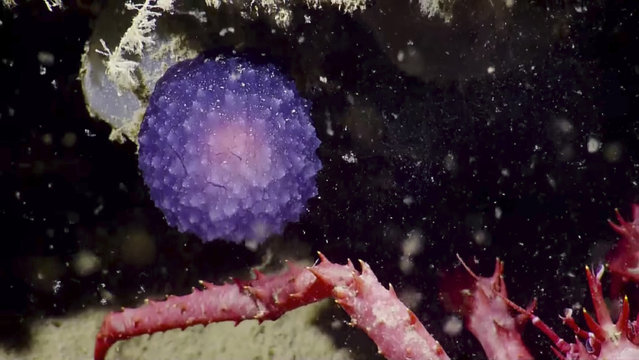
In this July 2016 image made available by the Ocean Exploration Trust, a crab, bottom, stands near an unidentified purple orb during a deep sea expedition around the Channel Islands off the coast of California. After sampling, it began to unfold to reveal two distinct lobes; researchers thing it may be a pleurobranch sea slug, a close relation to the nudibranch, but currently, none of the known species of California deep-sea pleurobranchs are purple. (Photo by Nautilus Live/Ocean Exploration Trust via AP Photo)
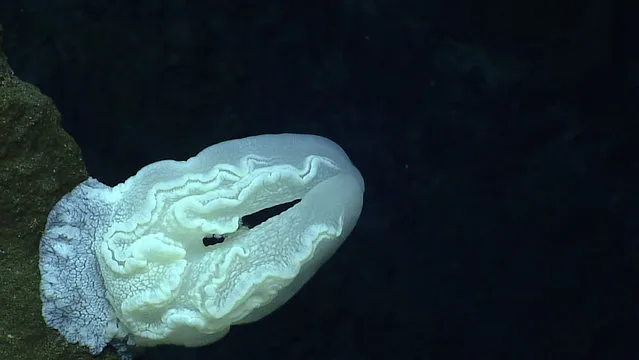
This June 22, 2016 image made available by NOAA shows a benthic comb jelly fish at the Ahyi Seamount, during a deepwater exploration of the Marianas Trench Marine National Monument area in the Pacific Ocean near Guam and Saipan. (Photo by NOAA Office of Ocean Exploration and Research via AP Photo)
21 Oct 2016 12:30:00,
post received
0 comments
